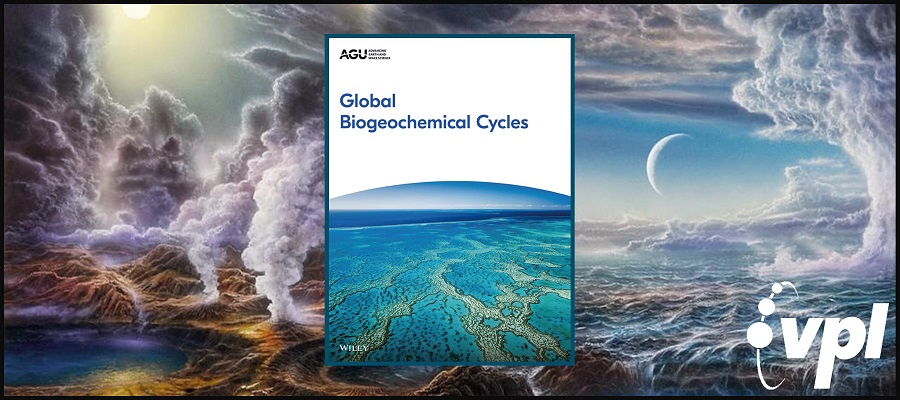Earth’s carbon cycle maintains a stable climate and biosphere on geological timescales. Feedbacks regulate the size of the surface carbon reservoir, and on million‐year timescales the carbon cycle must be in steady state. A major question about the early Earth is whether carbon was cycled through the surface reservoir more quickly or slowly than it is today. The answer to this question holds important implications for Earth’s climate state, the size of the biosphere through time, and the expression of atmospheric biosignatures on Earth‐like planets. Here, we examine total carbon inputs and outputs from the Earth’s surface over time. We find stark disagreement between the canonical histories of carbon outgassing and carbon burial, with the former implying higher rates of throughput on the early Earth and the latter suggesting sluggish carbon cycling. We consider solutions to this apparent paradox and conclude that the most likely resolution is that high organic burial efficiency in the Precambrian enabled substantial carbon burial despite limited biological productivity. We then consider this model in terms of Archean redox balance and find that in order to maintain atmospheric anoxia prior to the Great Oxidation Event, high burial efficiency likely needed to be accompanied by greater outgassing of reductants. Similar mechanisms likely govern carbon burial and redox balance on terrestrial exoplanets, suggesting that outgassing rates and the redox state of volcanic gases likely play a critical role in setting the tempo of planetary oxygenation.
Here we use an array of major and trace element data to constrain the redox conditions in the water column and extent of basinal restriction during deposition of the ZF. We also present new selenium (Se) abundance and isotopic data to provide firmer constraints on fluctuations across high redox potentials, which might be critical for phosphogenesis. We find that Se isotope ratios shift over a range of ~3‰ in the ZF, with the earliest stratigraphically-resolved negative Se isotope excursion in the geologic record, implying at least temporarily suboxic waters in the basin. Furthermore, we find that redox-sensitive element (RSE) enrichments coincide with episodes of P enrichment, thereby implicating a common set of environmental controls on these processes. Together, our dataset implies deposition under a predominantly anoxic water column with periodic fluctuations to more oxidizing conditions because of connections to a large oxic reservoir containing Se oxyanions (and other RSE’s, as well as sulfate) in the open ocean
We find that in the Late Pennsylvanian units, an estuarine nutrient trap on the Midcontinent Shelf enabled vigorous selenium recycling, leading to very high concentrations in sediments and enrichment of heavy isotopes in the aqueous selenium reservoir. In contrast, we find that among the Late Devonian units, differences in local basinal hydrography led to a gradient in selenium abundance and isotopic fractionation, with the more restricted basins depleting their selenium reservoirs and causing enrichment of heavy isotopes in the residual aqueous reservoir. In both of these case studies, the additional context provided by complementary paleo-environmental proxies was critical for distinguishing between possible drivers of selenium isotopic variability. When extending such studies to other paleo-environmental settings, we suggest that the continued use of complementary datasets will enable the most robust use of the selenium paleo-redox proxy. Moreover, further development of techniques for high-precision and phase-specific selenium isotope measurements will greatly improve the ability to deduce subtle redox fluctuations with this proxy.
If the process of microbial N2 fixation records the δ15N value of atmospheric N2 in cycad foliage, the fossil record of cycads may provide an archive of atmospheric δ15N values. To explore this potential proxy, we conducted a survey of wild cycads growing in a range of modern environments to determine whether cycad foliage reliably records the isotopic composition of atmospheric N2. We find that neither biological nor environmental factors significantly influence the δ15N values of cycad foliage, suggesting that they provide a reasonably robust record of the δ15N of atmospheric N2. Application of this proxy to the record of carbonaceous cycad fossils may not only help to constrain changes in atmospheric nitrogen isotope ratios since the late Paleozoic, but also could shed light on the antiquity of the N2‐fixing symbiosis between cycads and cyanobacteria.
